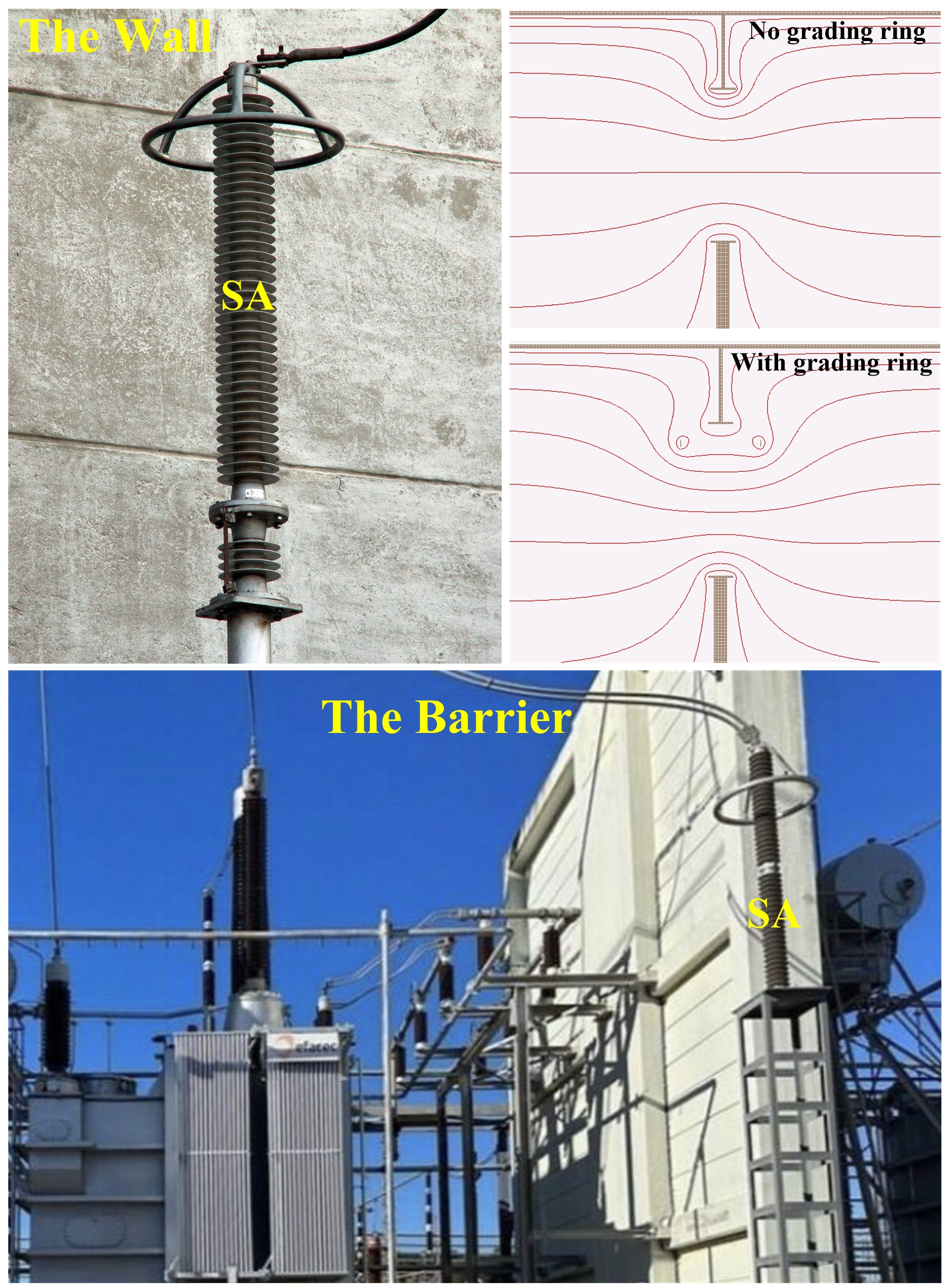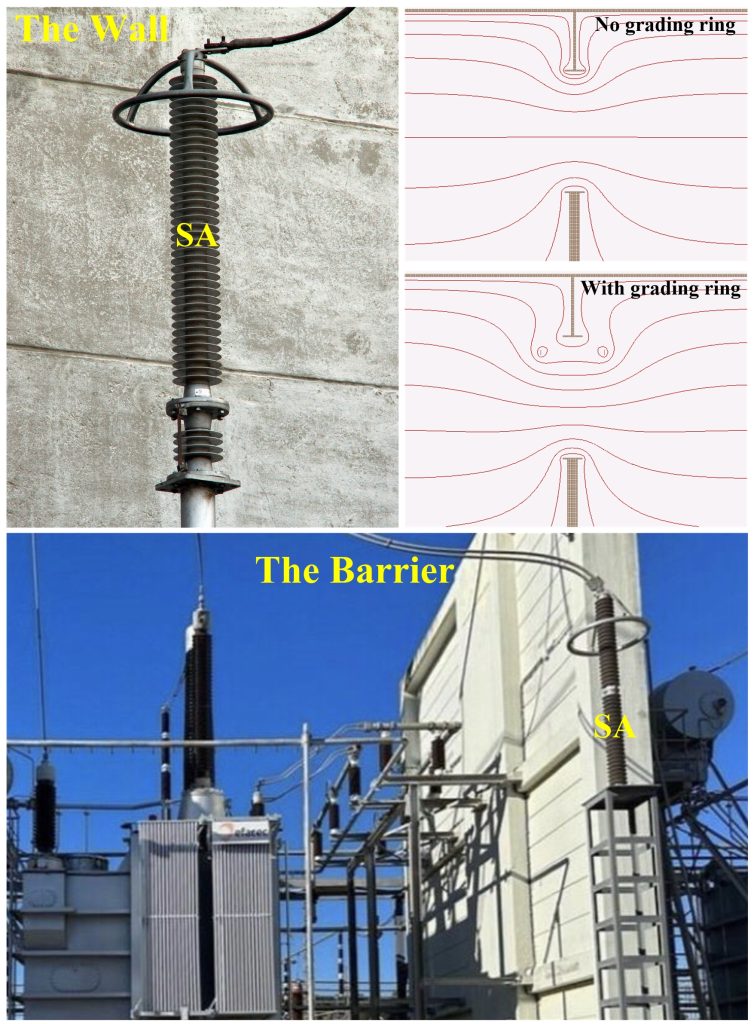
Surge arrester and the WALL (not about Pink Floyd)
For surge arresters (SA) of 110 kV and above, special grading rings are usually used, which, in normal operation mode, make it possible to equalize the distribution of AC 50 Hz voltage along the SA height. This distribution is important because it guarantees the absence of overheating of the SA elements (varistors), eliminates the risk of accelerated aging and thermal breakdown.
The selection of optimal grading ring parameters (number of rings, their mounting heights and diameters) is made as a result of computer calculations. Usually, such calculations are performed under the assumption of standard conditions – the SA is located at a height of 2.5-3.0 meters above ground level, and there are no massive grounded structures in its immediate vicinity that can affect the electric field. However, the realities may differ from what was included in the standard calculations.
For example, in practice there are cases when the SA is located close to:
✅ The wall of the building.
✅ The fire barrier between power transformers.
✅ The power transformer tank.

These massive grounded elements affect the electric field, and therefore affect the optimal parameters of the SA grading rings. Despite this fact, as far as I know, SA manufacturies do not offer any options to optimize the grading ring parameters depending on the proximity to the walls, and according to the catalogs, the SA grading ring parameters are always the same within any selected SA voltage class (differences are declared only between SA types – ground-based or suspended).
It would be interesting to check the wall/barier/tank effects on voltage distribution and optimal grading ring parameters.
